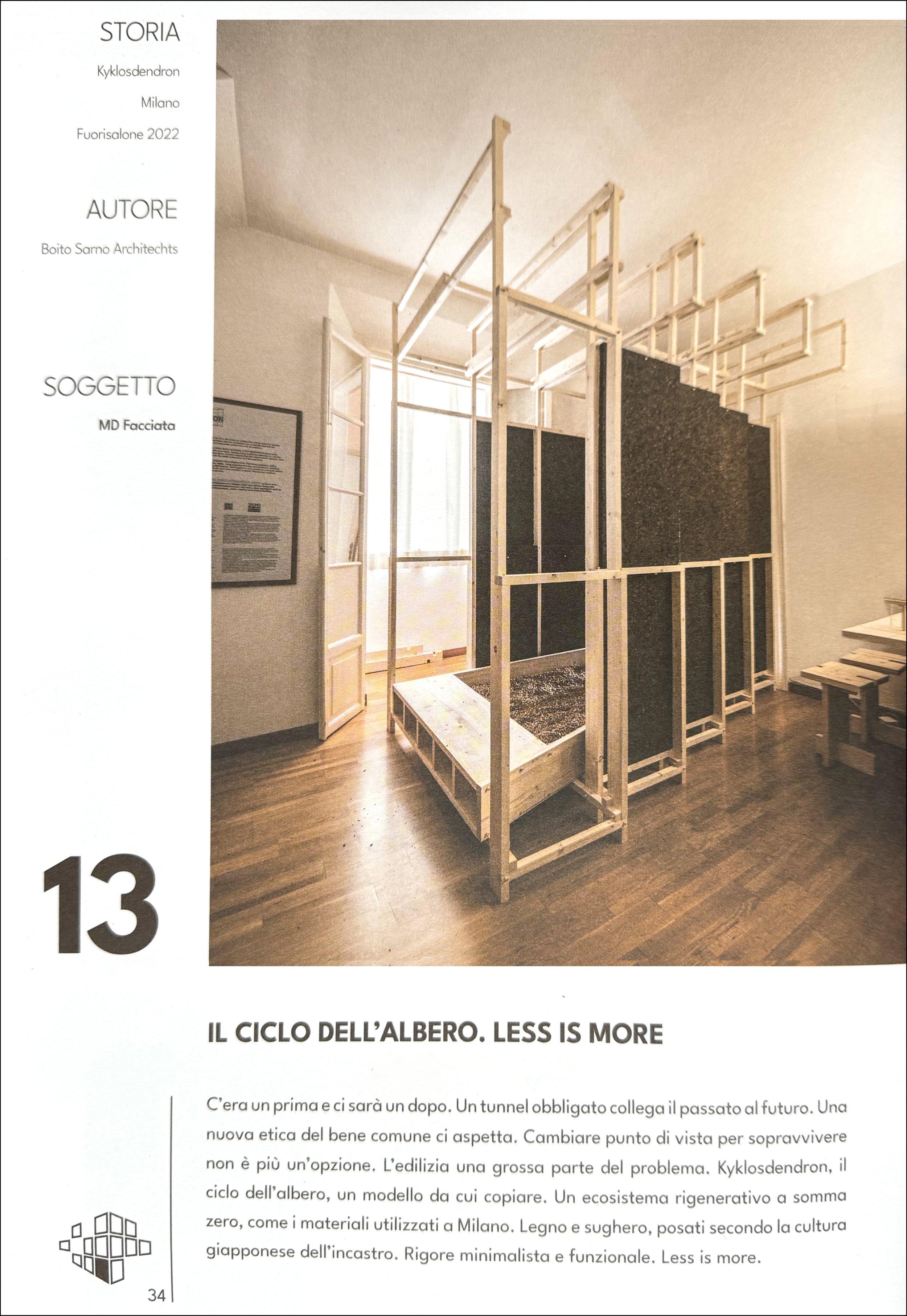The Carbon Footprint of Construction
A report for politicians & policymakers by Architects Climate Action Network, 2021.
Architects Climate Action Network / ACAN is a voluntary network of individuals from within architecture and its related built environment professions taking critical action to transform our industry in the face of climate and ecological crises. The authors met with representatives from other organizations and initiatives that are also currently engaged in efforts to further the industry’s response to tackling embodied carbon and whole-life carbon in construction.
READ THE REPORT
The Tip of the Carbon Iceberg
in Milan Design Week Magazine, 2022.
You’ve bought a new home or moved into a brand-new office. Before you step through the door, turn on the lights, switch on the heating, or use hot water, that building will already have emitted almost half of the carbon that it will over its lifetime. Those upfront emissions as it is being built, maintained, or demolished (known as 'embodied carbon') are not regulated. Developers, architects, engineers, and contractors know how to lower those emissions, but don't have to by law.
READ THE BIO
READ THE ARTICLE
Tools for Care
in Casabella no. 951, November 2023.
Tools for Care is the name of the international architecture workshop that concluded on 10 September 2023 in Padua aiming to redevelop the open spaces of the Pediatric Clinic through concrete child-friendly architecture micro-interventions.
READ THE ARTICLE
KÝKLOSDÉNDRON (Tree Cycle)
in Storie di Sughero - 1º Edition, August 2022.
Take off your shoes and walk on trees! KÝKLOSDÉNDRON (tree cycle) is a room within a room that offers an unexpected vantage point. Designed by Boito Sarno Architects, this installation is entirely made of wood and cork showing the potential of rediscovering traditional materials in a modern idiom.
READ THE ARTICLE
KÝKLOSDÉNDRON at Milan Design Week
in Archdaily, June 2022.
To move to net zero, the future of construction will be based on circular economy principles and the innovative use of biomaterials that are renewable and sequester carbon from the atmosphere. Presented at Milan Design Week’s Fuorisalone, in the heart of the Brera Design District, KÝKLOSDÉNDRON (tree cycle) is a room within a room that offers an unexpected vantage point inside a charming Milanese apartment from the early 1800s.
READ THE ARTICLE
High tech design combined for King's College School Wimbledon
in Costruire in Laterizio no.193, October 2023.
Founded in 1829, King’s College School Wimbledon is one of the UK’s leading schools. As part of an ongoing development masterplan to improve facilities across the whole campus, the new Music School designed by Hopkins Architects is a solid brick construction that has been sensitively designed to complement the larger school buildings and sit alongside neighboring Arts and Crafts houses.
READ THE ARTICLE
A high-tech ruin in the London Docks: the Patera Building System
in Stati Generali del Patrimonio Industriale 2022, Marsilio publisher, 2022.
The Patera Building System was the most successful high-tech project in Britain. Conceived as a system rather than a single building, in 1980 it was commissioned to Michael and Patty Hopkins, who took inspiration from the works of Richard Buckminster Fuller and Jean Prouvé. The idea behind the Patera is a set of components that are easy to transport and quick to build.
READ THE ARTICLE
Casa 1721
(House 1721)
in Il clima nella Casa - Sei Case di Harquitectes a Barcelona. LetteraVentidue publisher, 2023.
Located in the northeastern area of the metropolitan area of Barcelona, Granolles is a small city that follows the long green bank of the Congost River. A few steps from the railway, the entrance to Casa 1721 is located at number 77 of Carrer de Francesc Macià i Llussà. Here, a nearly four-story high and less than 5-meter-wide brick wall masterfully conceals a monumental spatiality.
READ THE ESSAY
Vietato demolire. Rilettura semantica del Regionalismo critico.
(Demolition is Forbidden. Semantic Rereading of Critical Regionalism.)
in Transizioni - Book of Papers. ProArch Unica_Uniss publisher, 2023.
The construction boom that followed the Second World War created an impressive stock of obsolescent buildings, whose ecological capital cannot continue to be wasted. This article proposes a contemporary rereading of Frampton's "Critical Regionalism", aided by the analysis of some significant architectural interventions which reestablished the connection between tectonics and topography, and promoted the close correlation between site, building, construction, and meaning.

















